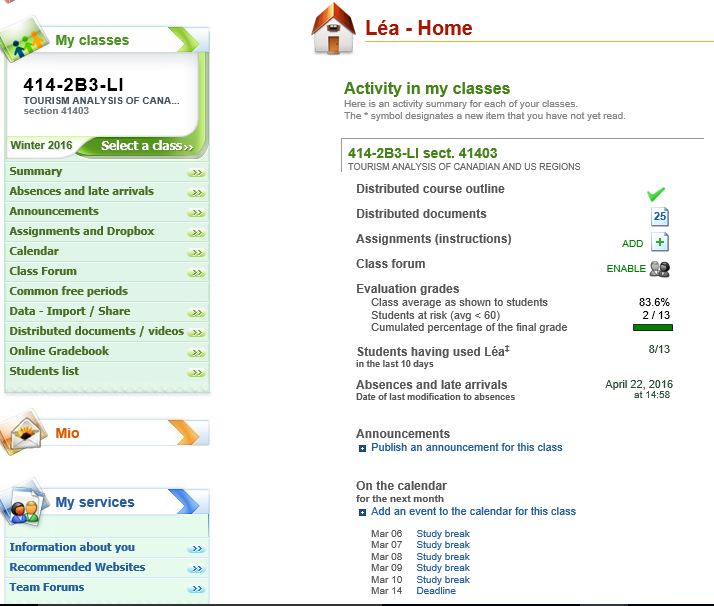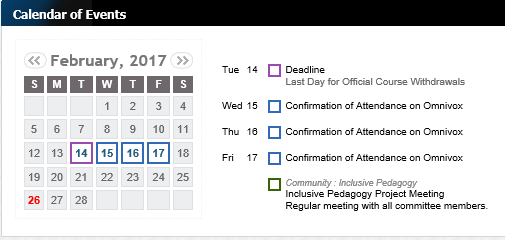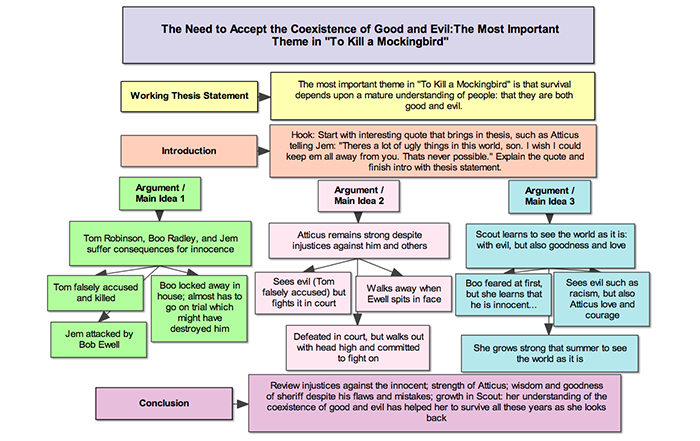ICTs That Have a Positive Impact on Students with ADHD
Teachers and staff at CEGEP Champlain-St. Lawrence were invited to participate in 2 pedagogical workshops about practical tips for teaching students with ADHD, on November 24, 2016 and more recently on February 23, 2017. These workshops were presented by Isabelle Quirion, Adapted Services Counsellor for colleges in Eastern Quebec, who works for the CCSI (Centres collégiaux de soutien à l’intégration). The first workshop introduced participants to ADHD and its impacts on college students. Considering that these students are easily distracted, have trouble staying attentive, frequently forget things, and have trouble remaining seated, I could not help thinking that the use of ICTs must be a hindrance to their learning. However, after reading the literature that Isabelle distributed and attending the second workshop, I realized that when used appropriately, there are many technological tools that teachers already have access to, that can help these students stay focused, get organized and have a positive impact on their academic lives.
This article will not focus on specialized software or applications, but rather some common tools available and examples of how their use can assist this growing population of students in our colleges.
Local Management Systems
Tools such as Léa and Moodle can be extremely helpful with organization and planning.
Making documentation available to students is an important element in helping them organize and prioritize their work. Distributing course outlines on the local LMS and referring to it often is a great way to keep students on track. Most students do not return to read the document on a regular basis. However, by posting the calendar of activities separately, it becomes a reference tool for weekly consultation, especially if it includes important class details.
This feature of the local LMS can also be used for posting readings, course notes, PowerPoint presentations, formative evaluations, videos, etc. For students with ADHD, having access to class content in advance allows them to review the information at home. Reading and conceptualizing can take them longer than the time given in class, so this helps them avoid falling behind. Léa, in the Omnivox system, allows you to add a description or include a date to have read or viewed a specific file.
The assignments feature of Léa provides students with the instructions and due dates all in one place. As these students, can forget easily, having multiple locations of where they can find information can help them make a deadline. Isabelle added that by breaking down the steps of an assignment and even including control dates to check in, is very beneficial for this group of students and can help their working memory.

The Léa interface for class management.
The calendar function is an ideal way of helping these students plan their time. By posting as much information about your class as possible in the calendar, in gives students a quick look at reminders of future events, without leaving the LMS.

The calendar feature is displayed on the homepage of Omnivox, where upcoming events for the college and for classes can be found.
Electronic Agendas
Getting organized and planning time is a challenge for many students, but especially those with ADHD. Adapted Services helps these students find a type of agenda that will work best for them. For some it is paper, but others opt for an electronic agenda, which is accessible at all times, from various sources.
In addition to smartphone agendas, students may also have access to Office 365 through their college, which has a calendar option. A teacher could in fact use this calendar as their course calendar and share it with students. The same features exist with a Google calendar. Students can then have a global view of their semester all in one place.
Whichever method is best for you, Isabelle stressed the importance of giving students time to enter information into their agendas. Reviewing due dates, and homework at the beginning of classes and providing students with 2 to 3 minutes to record the information will encourage success no matter which method is being used.
ICT Teaching Methods
Diversifying teaching methods will keep students’ attention and stimulate different senses. Using a variety of techniques will also help with communication and information processing.
To review content or teach new subject matter using visual aids will help keep the attention of students. Common choices are PowerPoint, Prezi, and Sway. Adding images or embedding videos provides variety to this type of presentation as well.
Sometimes just displaying the information in another manner can help students stay focused on the topic, or to think about it in another way. Diagrams, charts, organigrams, infographics, mind mapping or word clouds can offer interesting alternatives. Various tools exist in addition to Office Suite, such as Canva, Inspiration, Piktochart, or Wordle.

A mind map for essay writing. This template was taken from the Inspiration website.
Formative evaluations, such as quizzes using an online response system (for example Socrative or Mentimeter), allow you to see the level of understanding of your class.
Changing teaching methods also allows for short breaks and movement in between activities. Some methods that allow for movement are working in groups, changing rooms (computer lab), peer assessment, etc.
Teamwork
Teamwork can lead to much frustration between students, and if you add someone who tends to forget things and who has trouble focusing on the task at hand into the mix, it can be a recipe for disaster. Isabelle mentioned that teachers can play a proactive role in preparing for teamwork. Giving strategies of how to work in a team, defining rules, explaining roles, providing templates and a general framework within which you expect each team to work will better equip students.
There are tools that students and teachers can use to encourage collaboration. Google Docs, Office 365 or any cloud system is an ideal place for ensuring access to documents by everyone. The teacher can be added to the sharing group, allowing them to follow progress.
Other collaboration tools such as a blog space, or wiki could be implemented. There are also online applications such as Cyn.in or Asana. Asana includes a calendar, task lists, due dates and a colour-coding system. A teacher could set up groups from their account as students can only access the information regarding their own project. Any team member can add information and assign tasks to different people or give tasks a due date. Tasks get checked off when complete, so it is easy to keep on top of what remains to be done.
Technology can be helpful, but too much at once is going to be a problem for students with ADHD. A great way to learn about the tools your students are already using, is to meet with them at the beginning of the semester and inquire about what they use to keep themselves organized. In fact, this is an important question for the entire class, not just students with special needs. By knowing how your students operate you can make decisions about avenues to take with various aspects of your teaching strategies.
There are other easy to implement strategies that teachers can use to help students with ADHD, I would invite you to read the documents listed below which can be found on the CCSI website under documentation:
- Preferred Teaching Strategies
- Strategies for Success
- Giving Yourself All the Chances to Succeed

